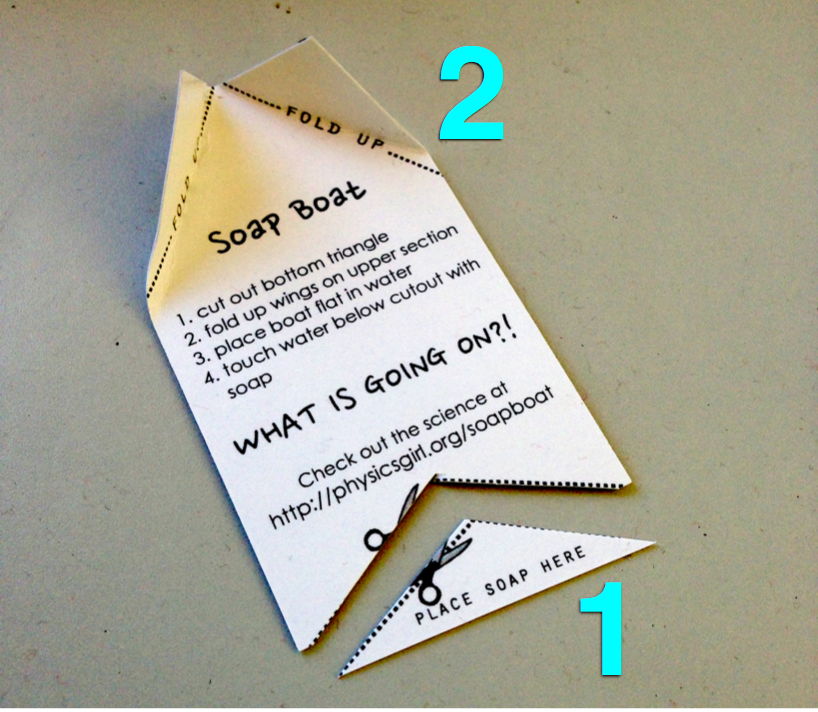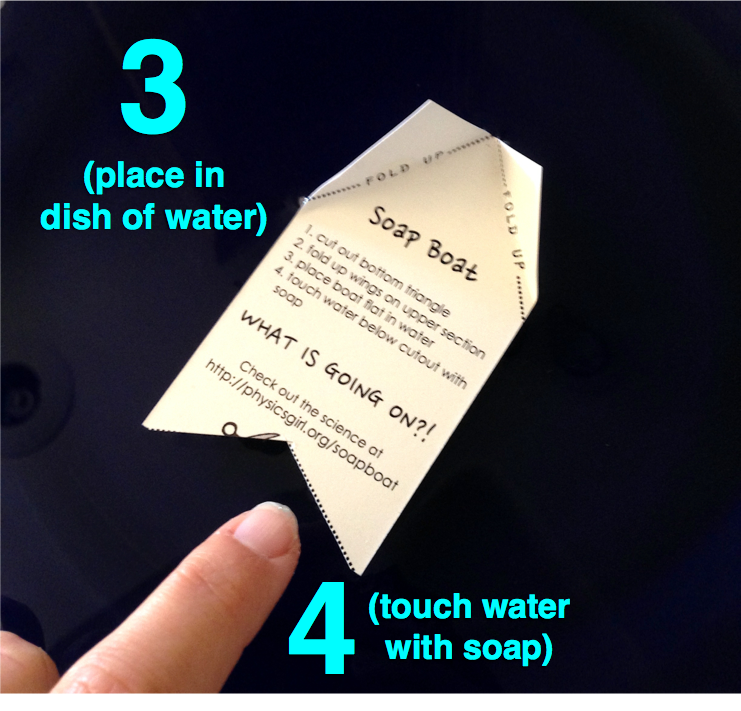A Boat Powered by Soap?!
How to make a soap boat:
1. Cut out a triangle from the bottom of a card.
2. Fold up the top corners to create a pointed nose shape.
3. Place the card flat in a bowl or plate of water.
4. Touch the water behind the cutout triangle with soap using your preferred method i.e. your finger, a cue tip, a toothpick, or simply dropping soap onto the surface of the water.
The boat is propelled forward! Why does this happen?
A few things are going on that explain why the boat moves forward, but they all involve surface tension. Surface tension arises from the attraction or pull between the H2O molecules on the surface of the water. It holds them tight together, like a net.
Why the boat moves forward
1. Liquids with lower surface tension tend to move toward liquids with higher surface tension. You can think of this as a tug of war between different liquids. The one with the higher surface tension pulls harder and wins the war, and the lower surface tension liquid will move toward it. This is called the Marangoni Effect. Soap has a lower surface tension than water, so the soap will move toward the water. As the soap moves backwards away from the boat, Newton’s law of equal and opposite reactions states that the boat must in turn move forward!
2. Soap also lowers the surface tension of water. Soap is a long molecule with a hydrophobic end (a end that does not like water) and a hydrophilic end (an end that likes water). When the hydrophilic ends bonds to the H2O molecules, they tend to break the bonds between water molecules and form a layer on the surface. This new arrangement lowers the surface tension. Now imagine the forces on the boat. The surface tension in the back of the boat is lower, but remains the same on all other sides. Therefore there will be a net force forward, and the boat will move forward!
Check out more information here:
http://www.hometrainingtools.com/a/soap-boat-science-project
http://www.chem.ufl.edu/~saacs/outreach/Break%20the%20Tension_A%20Water%20Experiment.pdf
http://web.mit.edu/2.21/www/Lec-notes/Surfacetension/Lecture4.pdf



